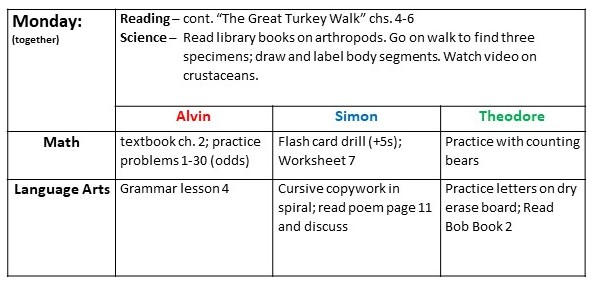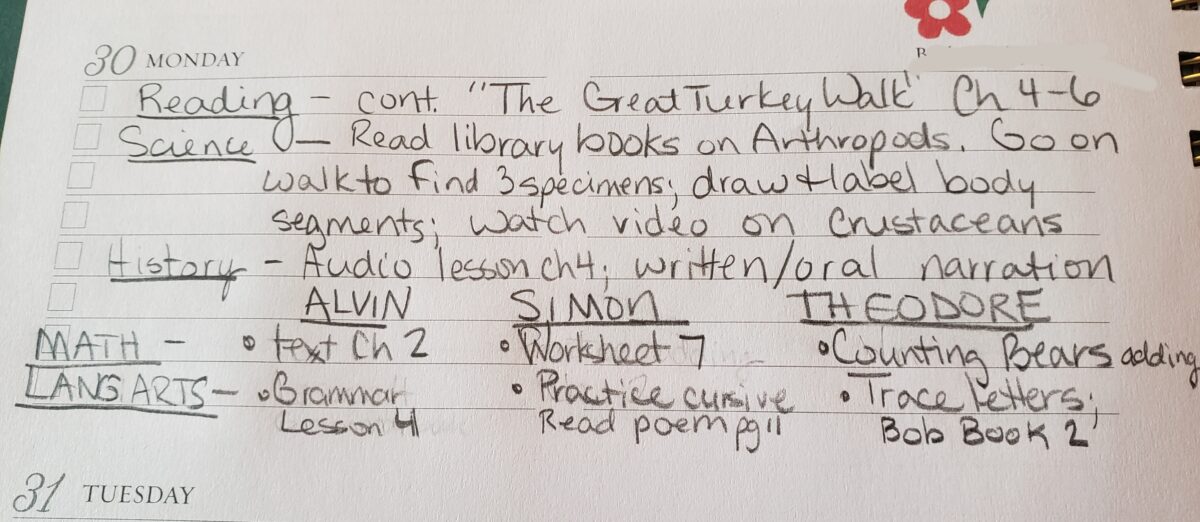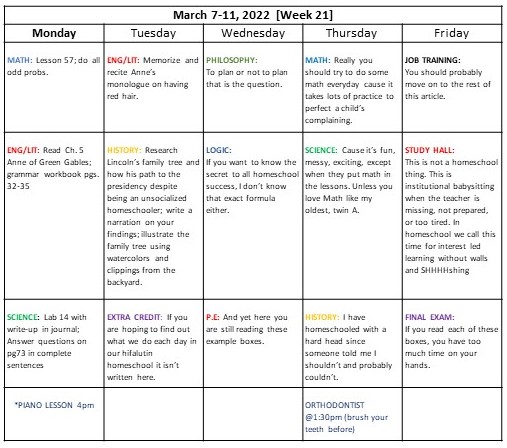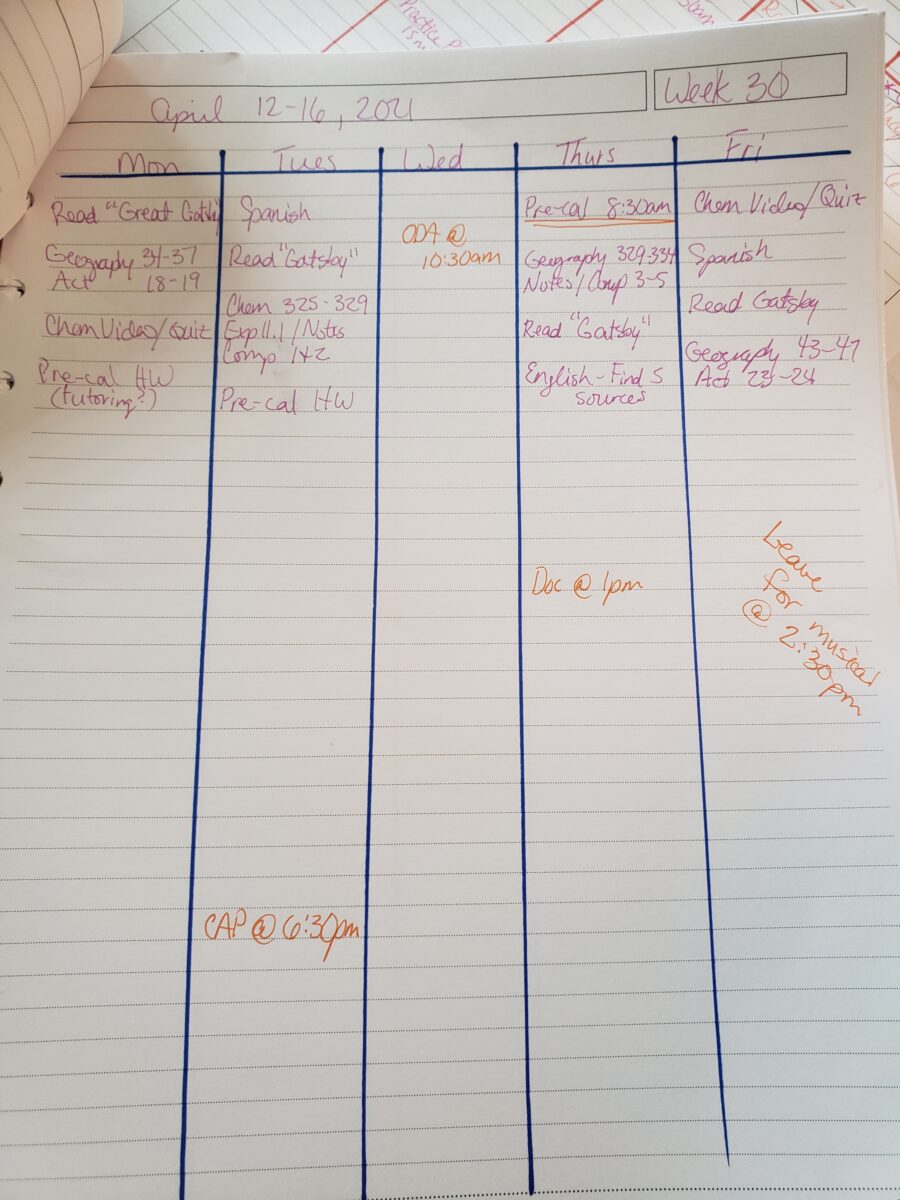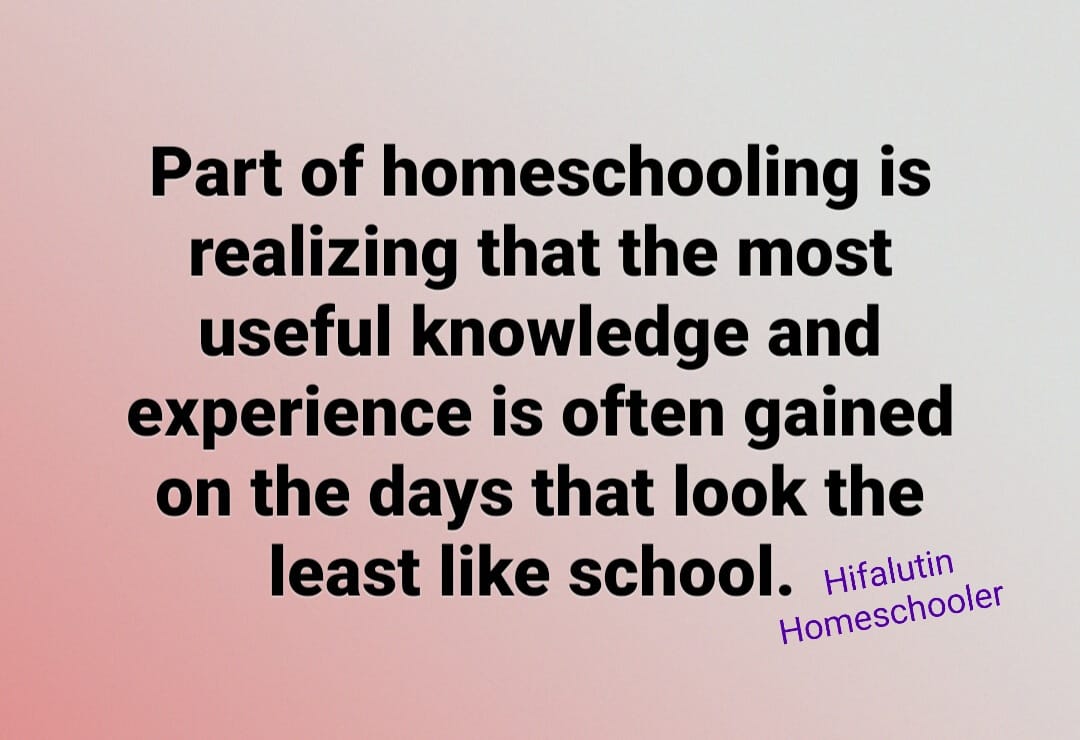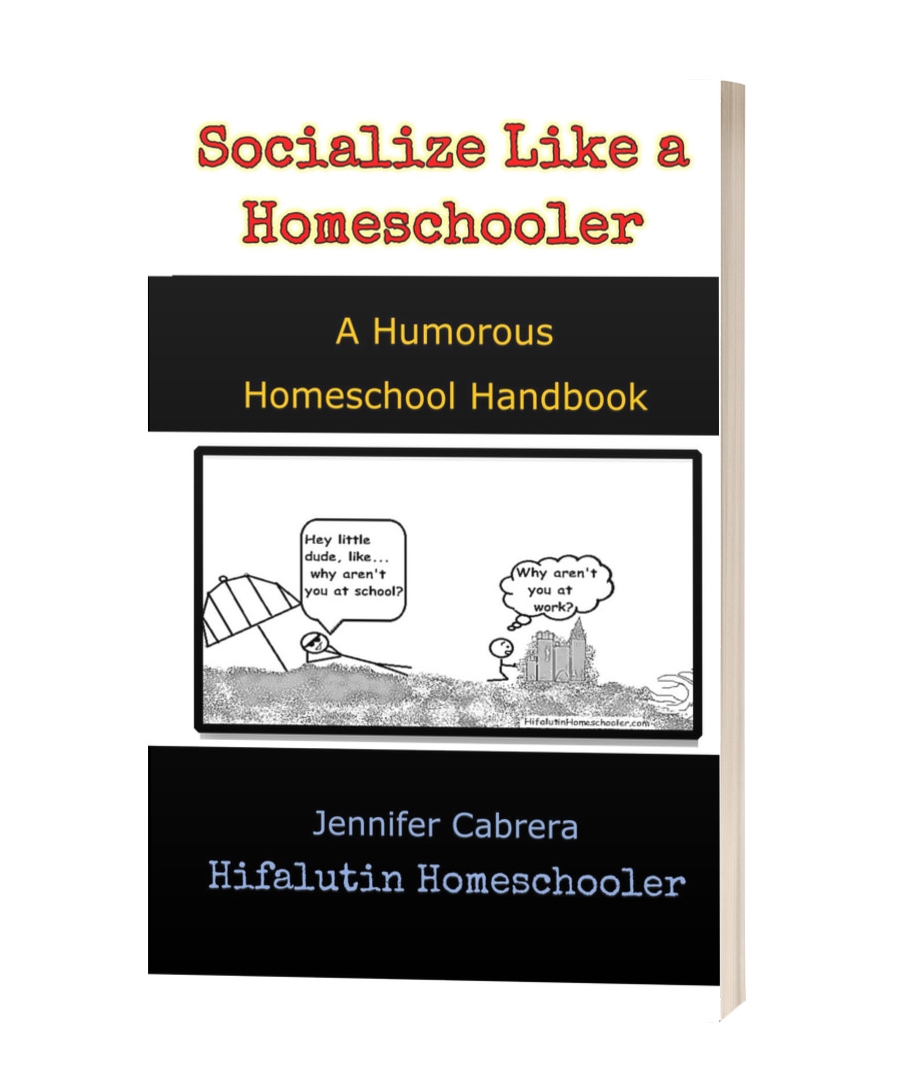Homeschool planners. My planner is blue with gold embellishments swirling with possibility. I bought it because it was pretty. And because it has a hardcover and the right amount of space in each calendar square to jot down, scratch through, and reschedule multiple events multiple times.
And because we will use it to conquer the world.
Ok, maybe we’ll just conquer our tiny speck of real estate and its 50-mile radius. At the very least, we’ll tackle high school algebra with my youngest, some great novels all together, and orthodontist appointments on time.
And senior year with twins.
Lord, it’s gone so fast. Let this year pass slowly. Slower than a cold wet day in February spent battling a head cold and a carb addiction while graphing equations with teens between 6 loads of laundry that need folding and grammar editing with a middle school boy.
Avoiding Planners and Pitfalls
The more fly-by-the-seat-of-the-pants type of homeschool moms may shun homeschool planners as stifling and binding. You can choose to simply wing it daily, staying completely open to where learning might lead. Though it seems common sense to at least note what time you scheduled that behind-the-scenes-tour of the local donut shop.
I’m all for keeping a road map of where we’ve been and a plan for where we’re going weekly. When grown, they can float around as they wish, but my kids will be able to look back see that momma tried. Here’s the proof dated, color-coded, and stored yearly and lovingly with samples of your writings and art.
Still there are some common pains and pitfalls to planning:
-
- Writing a lesson or activity down is not the same as actually doing it.
- Good intentions and beautifully laid plans are not proof of successful homeschooling.
- Not getting things done and often erasing or scratching out plans is tangible proof of failure.
- Detailed planning too far in advance especially in ink will likely lead to lots of scratch outs or the need to start a whole new planner.
- Planning too much each week out of excitement or pressure to perform, and then doing plenty but not all of it, will give you a false sense of failure.
- Getting it all done and wearing out your kids and your pretty gel pens will cause homeschool burnout.
- Getting anything noteworthy done and forgetting to write it down is a waste of good transcript/college application material. Ask me how I know?
Sips coffee. Sighs. Taps pencil anxiously trying to remember all the volunteer service hours her seniors completed in the last 3 years that she swore to write down when they get home from said event. OH! WAIT!… runs to hoard of calendars kept since escaping the public school system (where all things are documented whether accurate, embellished or imagined, to keep the tax dollars flowing).
Planners: Why, Who, and How?
Why:
-
-
- Because some mornings even mom is a quart low on ambition. She can’t recall where she was going with all these books and beakers so, God invented the planner. (At the very least I recommend a scratch pad, post-its, or sharpie doodles on the back of your hands to jog your memory.)
It’s good to know where you’re headed with at least a few intentions written in graphite or ink each week. Not making plans, so you’ll be free for any sudden opportunities, often equates to free-to-do-nothing time. Not planning can lead to nowhere, not learning but lazing. Monotonous idle time spent on computers not creativity. Procrastination feels a lot like free time. - It’s good to know where you’ve been. Then you can build upon things, progressing without needlessly repeating, which is smoother than homeschooling like a game of bop-a-mole.
- When the day comes to fill out graduation forms, college applications, resumes, etc., you won’t be left racking your brain to remember notable events, awards, and courses taken.
- Because you must keep homeschool records in your state. (Ugh… sorry. Read more at Quick Start Homeschooling)
- Because some mornings even mom is a quart low on ambition. She can’t recall where she was going with all these books and beakers so, God invented the planner. (At the very least I recommend a scratch pad, post-its, or sharpie doodles on the back of your hands to jog your memory.)
-
Who:
-
-
- Mom’s (or Dads) Master Planner: Parents need a master planner. Here it’s “Mom’s book.” No matter the age of your kids, parents just need a place to note the needs of the family. Especially when taking on all educational authority. I leave mine on the kitchen counter on full display accessible to all, all the time. All outings, appointments, events, homeschool start dates, vacations, music concerts, plays, test dates, days Dad is off work, birthdays, etc. are listed and updated daily. Everyone in the house knows to check mom’s book before committing to anything. And when committing to something new, it must be added to the book, or it might not happen. The book is important. It’s practically family. “Oh book… come to mommy.”
- Kids <10 years old: If all your kids are young ( say under 10yrs) and lessons are still mostly simple and straight forward, you can keep one big calendar/planner for everybody. Like “Mom’s book.” These types of planners are available everywhere school or office supplies are sold. They have a squared calendar for each month followed by lined pages for daily notes. Sometimes fun stickers to accent things you still might forget.
Keeping one big master planner makes for less to lose while corralling your wiggly students. Plus, if you keep your planner close and guarded, no eager little eyes will be disappointed if you occasionally need to accidentally on-purpose strike through a park day, field trip, or science experiment. Cause these things happen.
- Kids >10 years old: Around late elementary age, assignments become more detailed requiring extra space write down, and kids often want to work more independently without mom dictating every move. Getting them each their own planner (spiral or composition notebooks work too) can facilitate their drive to work at their own pace and truly begin to learn to learn.
It’s not a clean break from overseeing every homeschool minute, so don’t think you can write a list of assignments on Monday with a note saying… Have this on my desk by Friday at 5pm sharp. Coffee is in the break room. Independence and maturity, instead of procrastination and complaining, take time to develop. For some kids it takes longer than others a lot longer, or never. Allowing them to see what is expected of them each week gives them autonomy and frees up your time to work with younger kids, do housework, or complain to a best good homeschool friend take a tiny break.
- Kids >10 years old: Around late elementary age, assignments become more detailed requiring extra space write down, and kids often want to work more independently without mom dictating every move. Getting them each their own planner (spiral or composition notebooks work too) can facilitate their drive to work at their own pace and truly begin to learn to learn.
-
How:
*I recommend writing lesson plans weekly. I prefer Sunday evenings. I also hand write our plans for memory’s sake, and because colorful gel pens are fun, and it’s relaxing and realigns my week. Old School Homeschooling, y’all. * If you simply must plan further ahead, I suggest no more than a month at a time (definitely in pencil).
-
-
- Moms Master Planner with Kids <10yrs:
- In the squares on the calendar page for each month, jot down activities and times for appointments, field trips, play dates, reminders to worm the class pets, etc. Write them down the second you plan them. You will forget. Yes, you will.
- On the lined and dated pages to follow each calendar month, list the day’s group assignments. Separate grade level work in math or language arts can be listed under each child’s name.
- Moms Master Planner with Kids <10yrs:
-
For example…
Can also be written by hand to better adhere to memory…
Planners for Kids >10yrs:
-
-
-
- Use a simple spiral or composition notebook for each kid. TUL or ARC refillable spiral notebooks are pricier but last for years (they are sturdy, pleather bound, spiral-like; pages can be added and removed without tearing).
- Use an 8.5 x 11 sheet for each week. Write the date and/or week number at the top. Using a ruler and colorful or boring black ink, create columns labeled for each day of the week (M-F) along the top.
- Add the assignments, labeled by subject or bullet point, that you wish your kid to tackle in each day’s column. List page numbers, dues dates, or special instructions as needed.
- Set your rules and expectations from the start. My rule is that tasks must be complete on the day they are written. They are always free to work ahead, but that day’s assignments must be completed before non-school related activities or screen time.
- Be detailed with instructions so that tasks are manageable.
Write research paper/due next week… is an overwhelming request. Instead, write specific tasks each day such as…
Monday: Brainstorm and list 5 possible topics for science research paper.
Tuesday: Decided on a topic and 3 main points; write a thesis statement.
*Breaking larger projects into doable daily assignments creates small goals to measure daily progression, time to catch mistakes before they cascade, and less for parents to grade all at once. - List all activities, appointments, music/sports practice, etc. with the time at the bottom of each days’ column, so no one is taken by shock and surprise when you holler… Get in the car! We’re going to piano practice and then stopping at the store for a grape and a tsp of iodine.
-
-
For Example…
Real life in a hurry example…
Fragile Homeschool Planners for Firm Long-Term Goals
Because we live where we learn and life happens, there is a 100% probability that we will have marked out, erased, or put a happy sticker over at least two hundred planned activities or assignments in a year. This is no big deal if we are making the most of the time we have to educate our kids and prepare them for life 90% of the time. School classrooms never get to all the things they claim, and they’re passing kids through grade levels as carelessly as congress passes bills no one reads.
Daily homeschool plans are fragile. We may not build, cook, paint, read, or visit all the things we hope to, but our overall goal of raising capable, hardworking, moral adults is attainable if we make homeschooling a priority. Planners can be a simple but essential tool to help keep us focused along the way.
There are a million ways to organize your own homeschool planners. Many businesses and bloggers offer their own versions to download or purchase in print. They are convenient and inspirational, but like all curriculum, they can’t work a miracle and should be flexible to fit your family’s personal needs. Just remember, a planner is only as good as your willingness to follow through with the intentions and overall goals within, both written and prayerfully understood.





